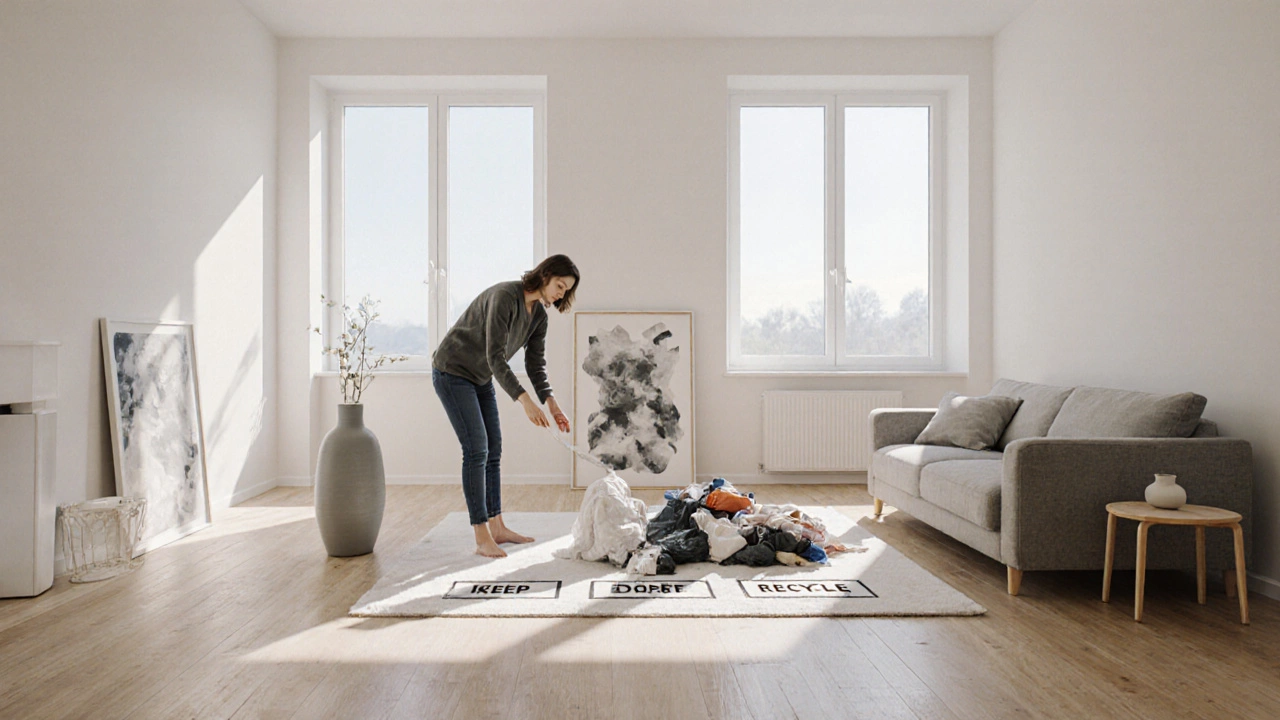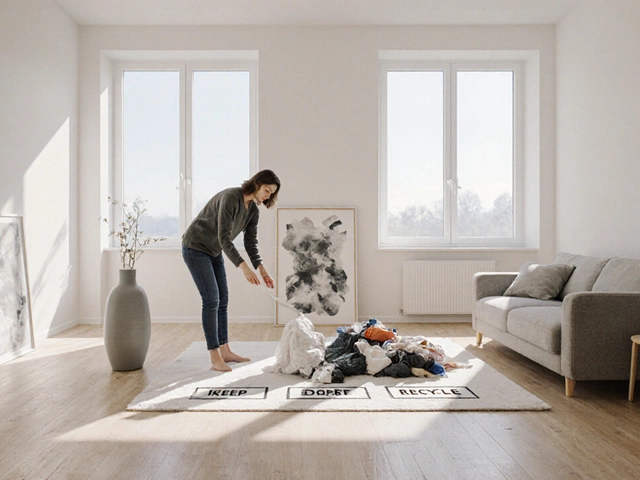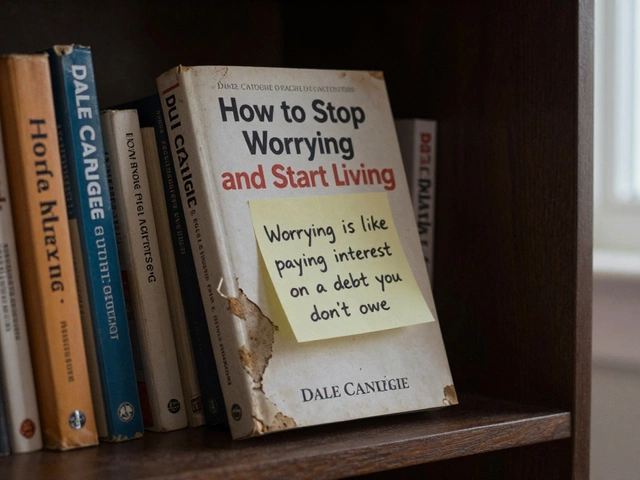When you think of Minimalism is a lifestyle that prioritizes simplicity, intentionality, and the removal of excess possessions, the first question is often “where do minimalists put their stuff?” The answer isn’t a single hidden drawer; it’s a mindset that reshapes every storage choice. Below you’ll find a practical guide that shows exactly how to store, display, or even eliminate items while staying true to a minimalist ethos.
What Minimalism Really Means for Your Space
Minimalism isn’t about living in a barren room; it’s about curating a collection of things that add value. Decluttering is the process of removing items that no longer serve a purpose or bring joy is the first step. Once the excess is gone, the remaining items deserve thoughtful homes. Think of each object as a piece of a puzzle that should fit neatly into the bigger picture of your daily routine.
Core Principles of minimalist storage
Before diving into specific solutions, keep these three principles in mind:
- Visibility: Anything you need often should be easy to see and reach.
- Multipurpose: Furniture or containers that serve more than one function cut down on the number of pieces you own.
- Quality over Quantity: Invest in durable, well‑designed storage that lasts years, not cheap items that need replacing.
Applying these ideas makes it clear why many minimalists gravitate toward options like Multipurpose Furniture is pieces such as ottomans with hidden compartments, beds with built‑in drawers, or benches that double as shoe racks. They reduce the total count of items while preserving functionality.
Popular Minimalist Storage Options
Below is a quick rundown of the most common ways minimalists store their belongings. Each option aligns with the three core principles.
- Hidden Compartments: Think under‑bed drawers, hollow‑core coffee tables, or wall‑mounted cabinets that blend into the décor.
- Vertical Shelving: Using floor‑to‑ceiling shelves maximizes space without expanding the footprint.
- Digital Declutter: Store documents, photos, and even receipts in the cloud to free physical space.
- Capsule Wardrobe: A curated set of interchangeable clothing items that fit in a single drawer or a small closet.
- Tiny‑House Inspired Storage: Compact living spaces use built‑in units, fold‑away tables, and modular racks.
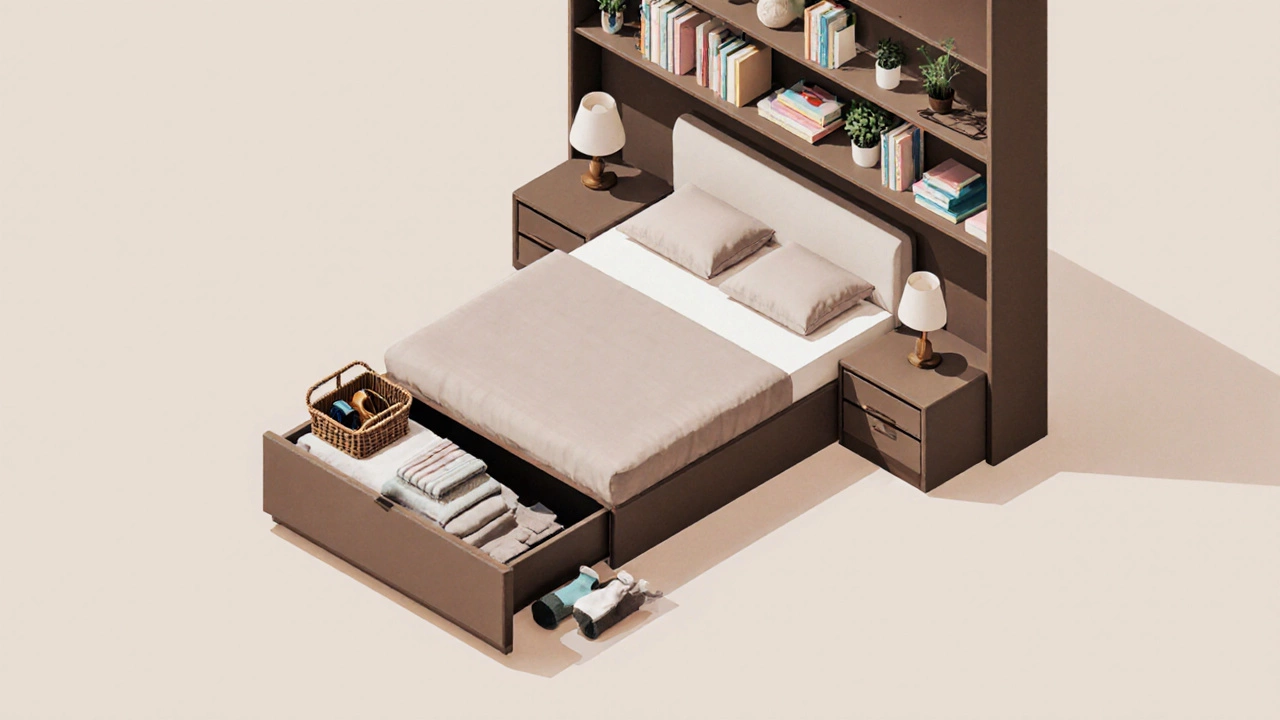
Comparison of Minimalist Storage Solutions
| Method | Visibility | Cost | Space Efficiency | Flexibility |
|---|---|---|---|---|
| Hidden Compartments | Low (behind panels) | Medium‑High | High (uses unused space) | Low (fixed design) |
| Vertical Shelving | Medium (open front) | Low‑Medium | Very High | Medium (adjustable shelves) |
| Multipurpose Furniture | Medium (inside storage) | Medium‑High | High (dual function) | Medium (depends on piece) |
| Digital Declutter | High (instant access) | Low (cloud subscriptions) | Very High (no physical footprint) | Very High (portable) |
| Capsule Wardrobe | High (visible closet) | Variable (depends on brands) | High (minimal pieces) | Low (fixed set) |
Step‑by‑Step Minimalist Storage Makeover
Ready to transform your home? Follow this simple plan.
- Audit Every Category: Pull out all items in a room and sort them into keep, donate, recycle, or trash piles. Use the KonMari Method is a popular approach that asks whether an item sparks joy as a quick decision guide.
- Map Your Space: Sketch the room and note any dead zones-areas under the bed, above doors, or empty wall space.
- Choose Storage Types: Based on the map, pick one or two storage methods that fit your lifestyle. For a small apartment, vertical shelving and hidden compartments work best.
- Invest in Quality Pieces: Purchase furniture that offers built‑in storage. Brands like IKEA is known for modular, affordable storage solutions provide a good balance of cost and durability.
- Place Items Intentionally: Store daily‑use items in visible spots, seasonal or rarely used items in hidden compartments, and digital copies in cloud folders labeled by year.
- Maintain the System: Schedule a 10‑minute weekly tidy‑up. If something no longer belongs, move it to the donate box immediately.
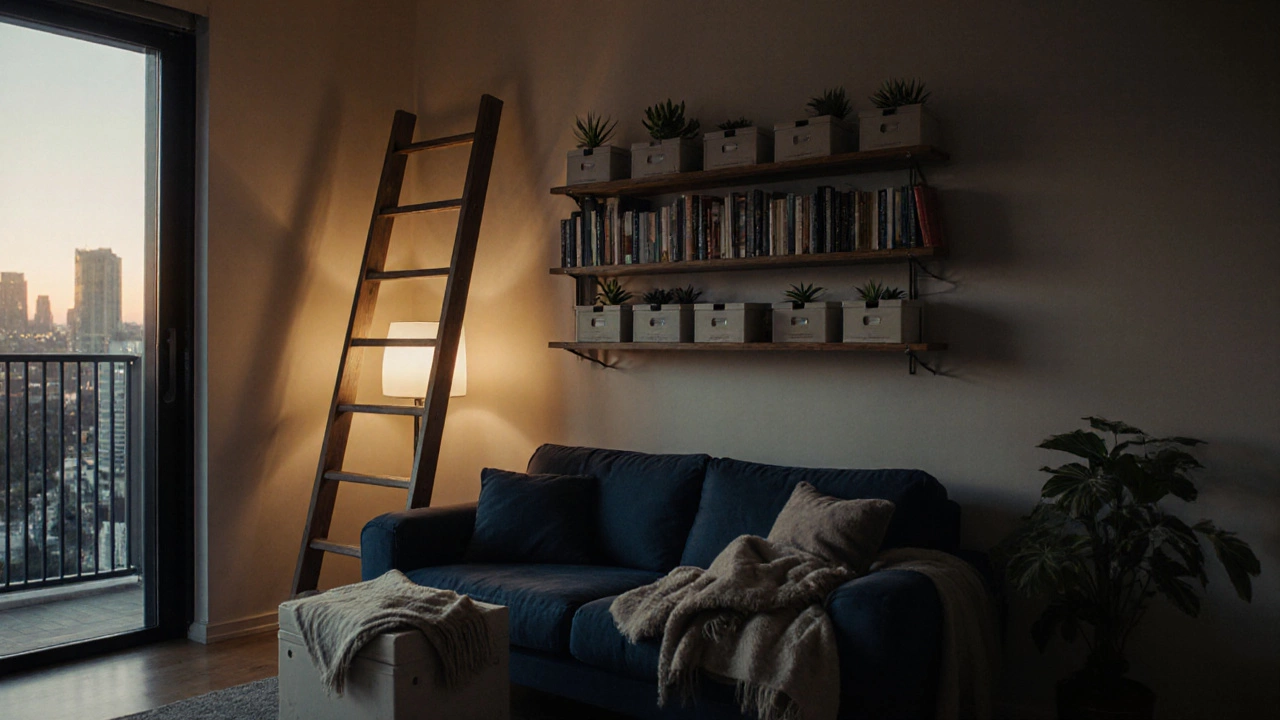
Real‑World Examples
Apartment in Sydney: Jenna lives in a 45‑square‑meter studio. She installed a floor‑to‑ceiling ladder shelf that holds her books, plants, and a few decorative boxes. Her couch doubles as a storage chest for blankets, freeing up a side cabinet entirely.
Tiny House in Melbourne: Tom uses a fold‑out dining table that slides into the wall and a loft bed with built‑in pull‑out drawers. Everything from kitchenware to winter coats fits inside the loft, keeping the ground floor clear.
These stories highlight how the same principles adapt to different living situations.
Tips, Tricks, and Common Pitfalls
- Don’t Over‑Optimize Visibility: If everything is in plain sight, you’ll end up with visual clutter. Balance visibility with concealed storage.
- Beware of “Nice‑to‑Have” Items: Minimalists often acquire decorative pieces that look good but add no functional value. Ask yourself if it truly belongs.
- Label Digital Files: A well‑named folder system prevents you from creating endless duplicate PDFs.
- Use Uniform Containers: Matching boxes and baskets create a cleaner look and stack more efficiently.
- Rotate Seasonal Items: Store winter coats in the attic during summer and bring them down only when needed.
Frequently Asked Questions
Can I be a minimalist if I own a lot of books?
Yes. Store books on vertical shelves or a compact bookcase that fits your wall space. Keep only titles you truly love or will reread, and consider digitizing older volumes.
What’s the best way to store shoes without ruining a minimalist look?
Choose a low‑profile shoe rack that slides under a bed or a sleek bench with hidden compartments. Keep the number of visible pairs to a minimum-usually no more than five pairs per season.
How does digital decluttering fit into a minimalist lifestyle?
By moving documents, photos, and even music to cloud storage, you eliminate physical clutter while maintaining easy access. Use folders, tags, and regular backups to keep the digital space tidy.
Is it okay to buy new storage furniture if I’m already a minimalist?
Only if the piece adds genuine function and replaces multiple older items. Look for quality, timeless design, and multipurpose use to ensure it aligns with minimalist values.
How often should I reevaluate my belongings?
A quick 10‑minute review each month works well. For deeper purges, do a full audit twice a year-often after a move or a seasonal change.

